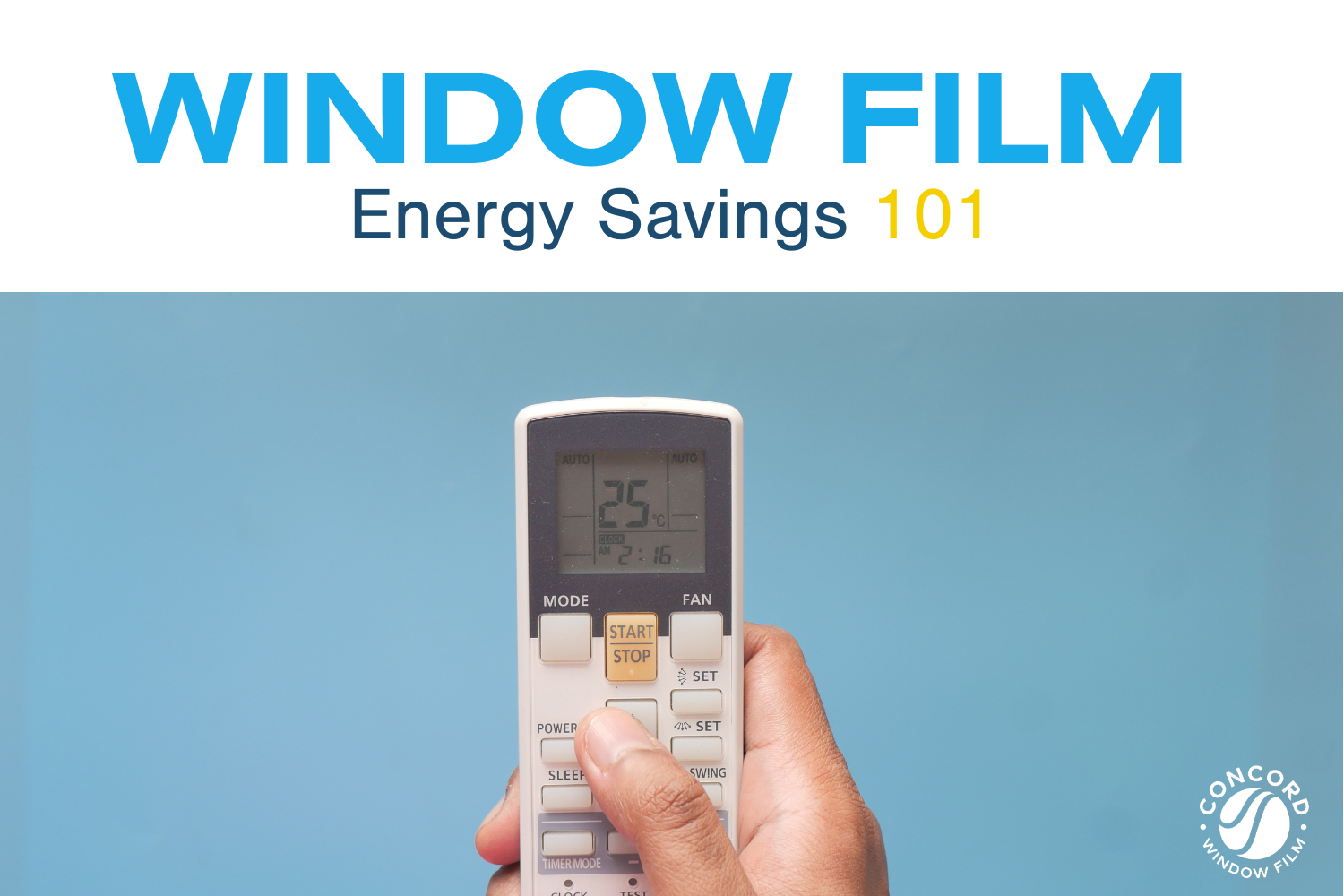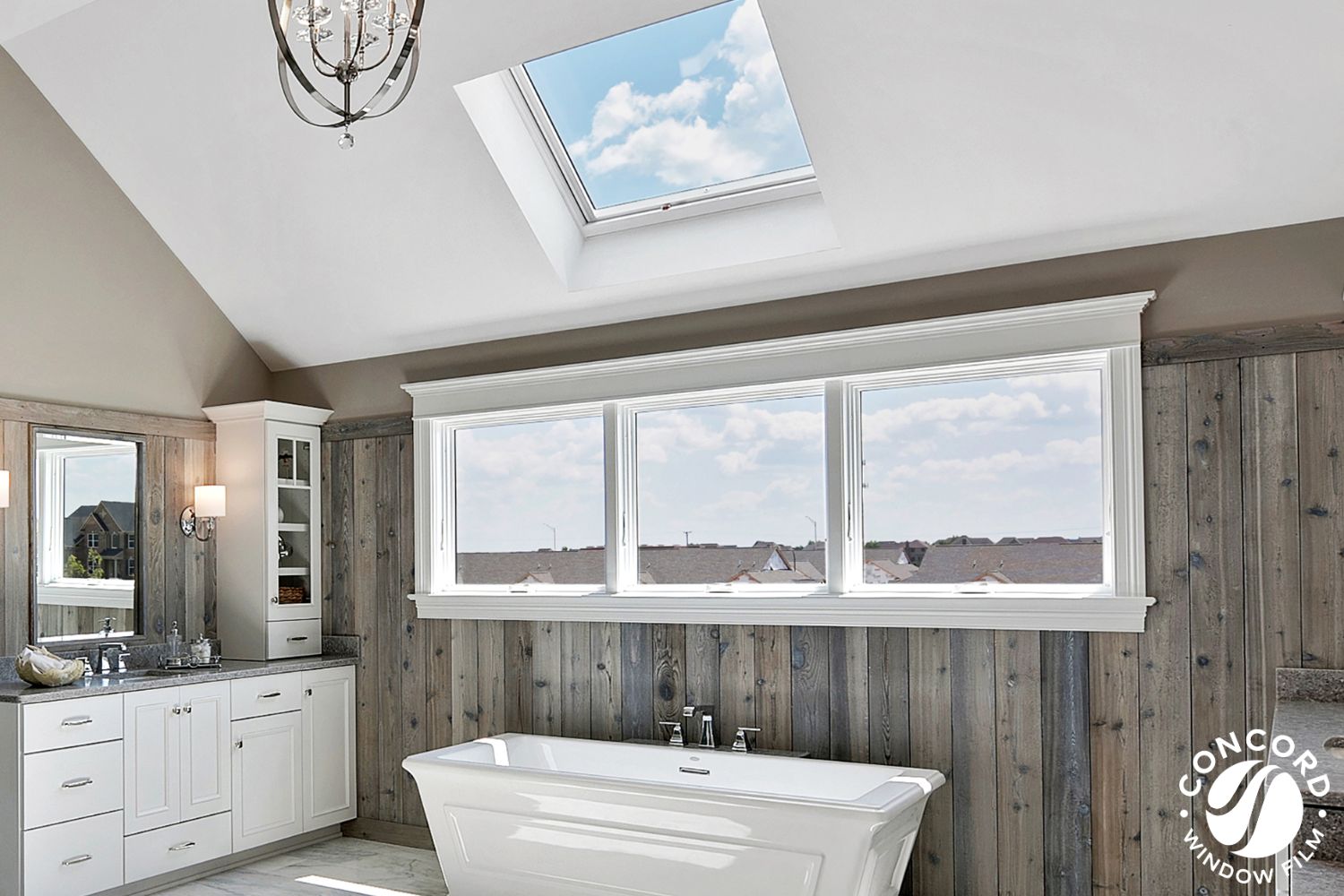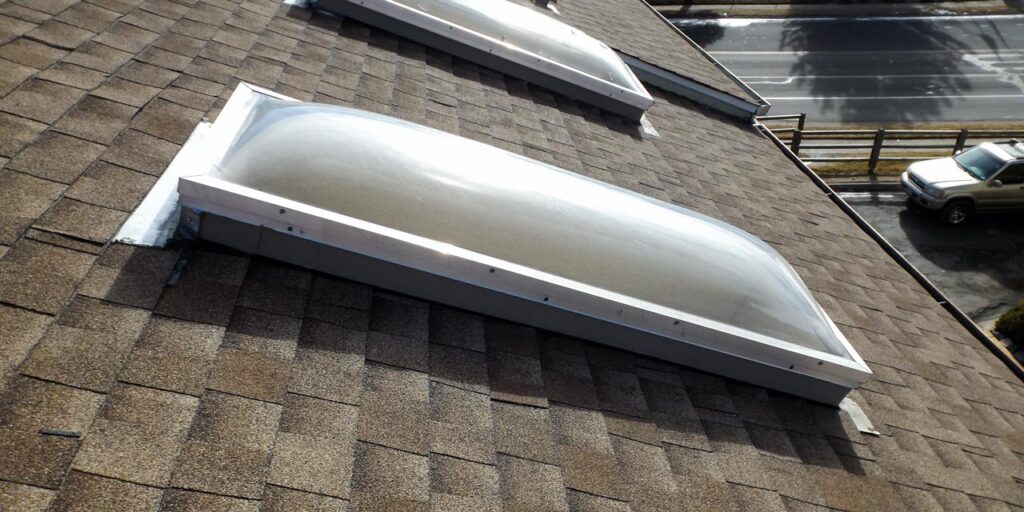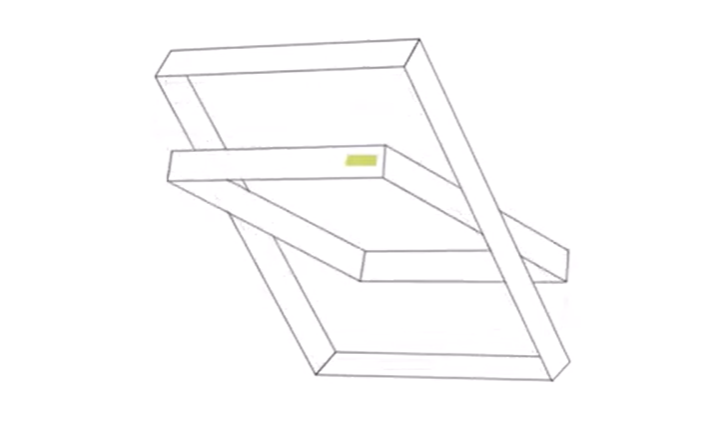
FREE SHIPPING ON PRECUT KIT ORDERS OF $100 OR MORE

Can I put window film on my skylights? This is a question we are frequently asked. The answer, like so much in life, is “it depends”. But, son’t worry – we’ll break it down for you so you can see if window film will work for your skylights.
A skylight is an architectural feature designed to bring natural light into a building through the roof. It consists of a frame holding a transparent or translucent material, such as glass or plastic, and is installed in the roof or ceiling.
Skylights are used to enhance illumination, create an aesthetic appeal, and sometimes provide ventilation. They come in various shapes, sizes, and styles and can be a fixed feature or operable to allow fresh air into the space.
Skylights are commonly found in both residential and commercial buildings, offering a practical solution for lighting interiors naturally while also contributing to energy efficiency.
The history of skylights is a fascinating journey through architectural evolution, reflecting changes in technology, materials, and aesthetic preferences over centuries.
According to VTECH Skylights, the concept traces back to Ancient Rome, with one of the earliest examples being the Pantheon. This iconic structure featured a top lighting element known as an oculus, which was essentially a large open-air skylight.
During this era, glass began to be used in skylights in notable buildings such as cathedrals and castles. However, the technology of glass-making was still nascent, and the size of glass panes was limited.
The French significantly advanced the use of glass in architecture. Notable examples include the Halle aux Blés in Paris, which utilized glass skylights to bring more light into the building. By the 1830s, modern-looking skylights were installed in the Palace of Versailles.
This period marked a major turning point in skylight design, as it became possible to produce large sheets of glass. These advancements allowed for the installation of skylights in smaller buildings and residential homes.
The challenges of material scarcity during World War II led to innovations in skylight design. Villum Kann-Rasmussen of the VELUX company developed leak-proof skylights using wooden framing, zinc cladding, and condensation drains. His designs paved the way for modern skylights that are durable and functional
Today’s skylights have evolved to include high-performance, energy-efficient glass and innovative designs. Modern skylights can be opened and closed automatically and are equipped with shades powered by electricity or solar energy. The industry continues to grow and innovate, with the market for skylights expanding significantly.
Throughout history, skylights have transitioned from simple, open-air designs to sophisticated architectural elements that enhance natural lighting while offering energy efficiency and aesthetic appeal.
People love their skylights for the light they let in and the views of the sky – both day and night. But often because of the angle of skylights, at the height of the day, skylights can make a room very hot. It can cause glare as well, making it difficult to see screens comfortably.
Window film is a natural solution to heat and glare from the sun, but skylight glass is a bit different from regular annealed window glass so there are some limitations.
The first step to see if you can install window film on your skylights is to determine what type of material your skylights are made from.
First, it’s important to know that skylights today are typically made from glass – but there are (especially older) plastic skylights out there.
Plastic skylights are the ones that look like a bubble on the top of a house and are made from plastic or polycarbonate. They were an inexpensive option at one time but they don’t age well so we will focus on glass skylights.

Source: Skylight Specialists
The majority of skylights out in the market are made from tempered glass. Tempered glass is also known as safety glass. It’s the type of glass that is used in your car windshield. When tempered glass breaks, it doesn’t create large sharp shards of glass – instead it breaks into many tiny pieces protecting people from sharp glass that could seriously injure them.
The next most common type of glass is laminated glass. This type of glass is growing in popularity because some state building codes require skylights to be made with this glass if it’s over a certain height.
Laminated glass is two pieces of glass sandwiched together with a sheet of plastic between them. The plastic holds the glass together should it break.
Laminated glass is slightly more expensive than tempered glass skylights.
Finally, the least commonly used glass is impact glass because of its cost. This glass is used in areas that are prone to hurricanes, hail and high winds.
Impact glass is essentially laminated glass with more layers.
Each skylight has a small nameplate or plaque attached to it that gives a manufacturer code. That code can be used on a manufacturer’s website (or by calling their customer service) to tell you what type of glass your skylights are.
The plate is typically affixed to the frame of the skylight and if you can’t see it when the skylight is close, you may have to open the skylight to access it.

When you find the plate, jot down the information and look up the model on the manufacturer’s site to determine your glass type or call their customer service department with the information.
VELUX® find your product ID for products made post 2010
Find your product ID for products made pre 2010
VELUX® Customer Service Number: 800-888-3589
Find Your Fakro Product ID
Fakro Customer Service Number: 630-543-1010
Contact Sun-Tek
customerservice@sun-tek.com
Sun-Tek Customer Service Number: 407-859-2117
Now that you know what type of glass you have in your skylight, the next thing is to determine what film to use.
Plastic, plexiglass, and laminated glass should never be tinted. These plastic surfaces can outgas and make the film bubble up. Then, when you try to remove the film, the plastic will be destroyed during removal. Since the glazing is plastic, scraping the film adhesive away will scratch and destroy it.
You can read more about polycarbonate and window film here.
We also do not recommend installing window film on laminated glass or impact glass. The way laminated glass is produced increases the chance that the glass will break if film is applied, therefore we (and most film companies) do not film laminated glass.
Tempered glass is already heat strengthened, so your glass breakage risk is significantly reduced. This goes for any glass whether skylight, house window, building window, boat window, car window, etc. So, if you have a tempered skylight, it is fine to install window film.
We recommend our Silver 15 Reflective film for skylights because it is the safest bet on double-pane glass since it is highly reflective and lower absorbing than ceramic film.
Silver 15 Reflective is a metallic film that has terrific solar control properties. And since the skylights get the full force of the sun the silver will still help with keeping out light, and heat and minimize interior fading.
Shop our Silver 15 Reflective film here.
Skylights are wonderful additions to spaces that need to let in more daylight. They are typically made from either: (1) plastic/plexiglass/polycarbonate, (2) laminated glass, or (3) tempered glass. It’s important to know what type of glazing your skylight has before you consider window film.
Tempered glass can be filmed – and we recommend our Silver 15 Reflective film for skylights.